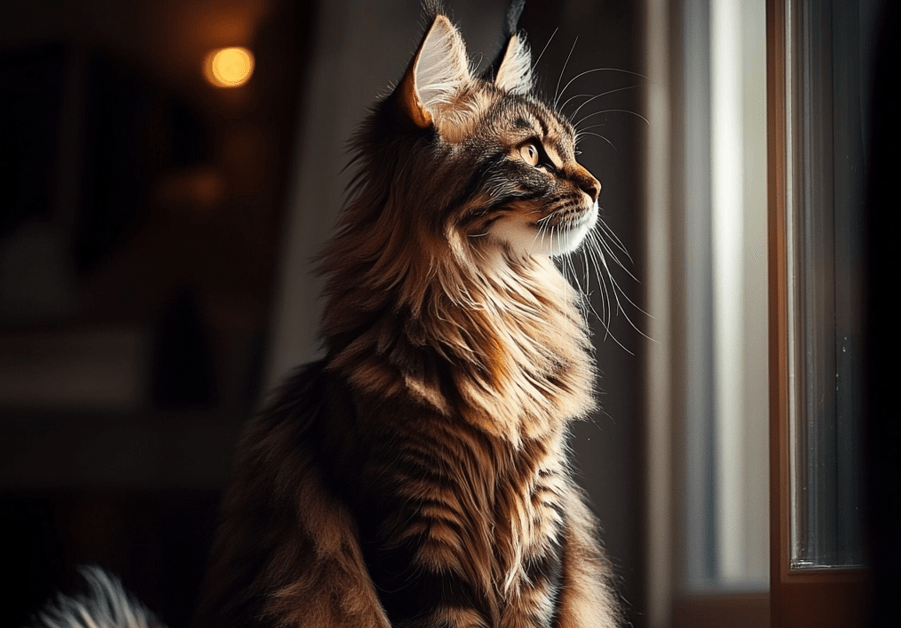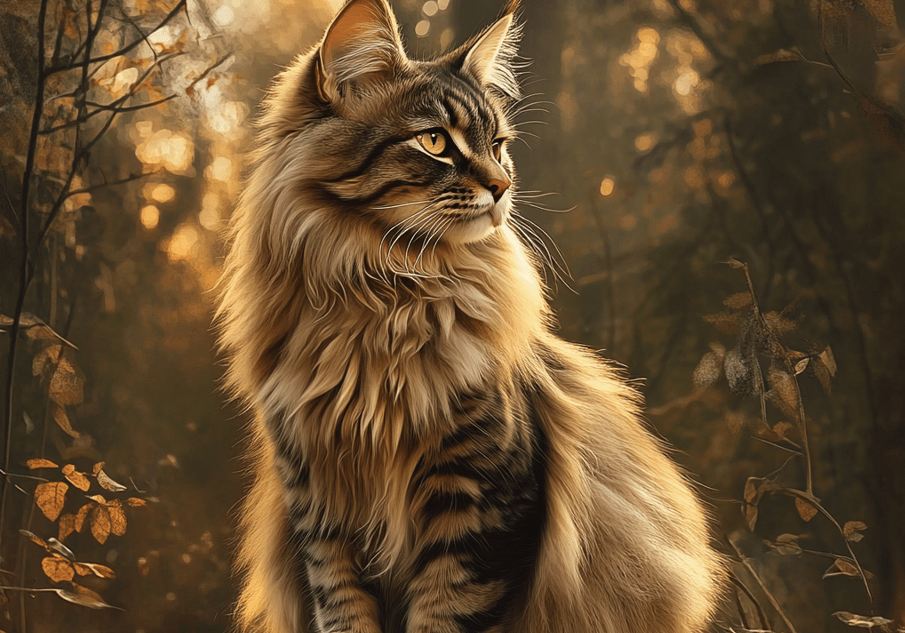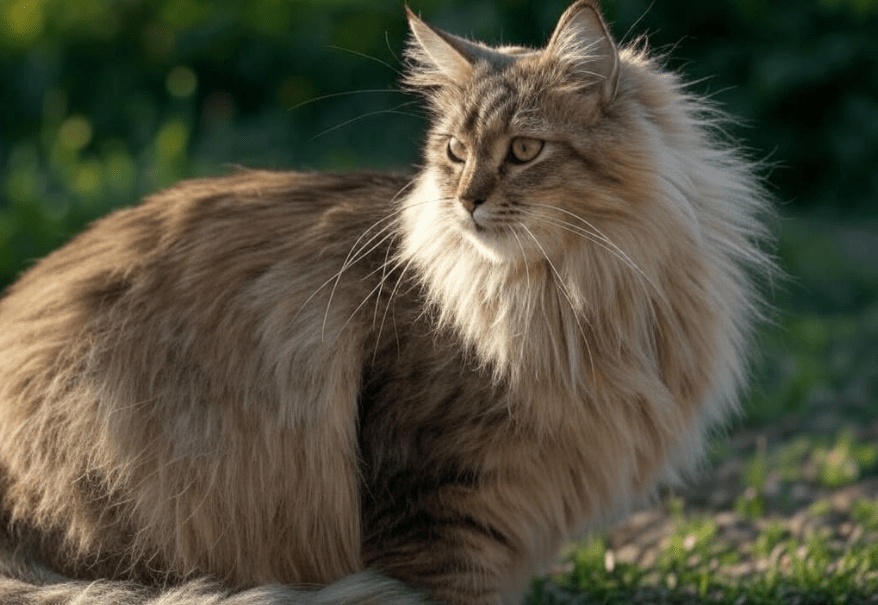
Maine Coon cats, with their striking size, tufted ears, and sociable nature, are a favorite among cat lovers. However, their natural behaviors, like scratching, can sometimes wreak havoc on your furniture. If you’ve ever wondered, “Why does my Maine Coon scratch furniture?” you’re not alone. Scratching is an instinctive behavior for Maine Coons, but it can be managed with the right strategies. This comprehensive guide explores why Maine Coon cats scratch, the impact on your home, and proven solutions to redirect this behavior, ensuring harmony between you and your feline friend.
Understanding Why Maine Coon Cats Scratch
Scratching is a natural and essential behavior for all cats, including Maine Coons. To address furniture scratching effectively, it’s crucial to understand the reasons behind it:
1. Marking Territory
Maine Coons, like other cats, have scent glands in their paws. When they scratch, they leave both a visual mark and a scent, claiming their territory. This is especially common in multi-pet households or when new people or animals are introduced.
2. Maintaining Claw Health
Scratching helps Maine Coons shed the outer layers of their claws, keeping them sharp and healthy. Their large, powerful paws make this behavior more noticeable compared to smaller breeds.
3. Stretching and Exercise
Maine Coons are large, active cats that need to stretch their muscles and maintain flexibility. Scratching allows them to extend their bodies, engage their muscles, and release pent-up energy.
4. Stress or Boredom
Stress, anxiety, or lack of stimulation can lead Maine Coons to scratch furniture as a coping mechanism. Changes in routine, lack of playtime, or insufficient environmental enrichment can trigger this behavior.
5. Attention-Seeking
Maine Coons are known for their dog-like personalities and love for human interaction. If scratching furniture gets your attention, your cat may repeat the behavior to engage with you.
Understanding these motivations is the first step toward redirecting your Maine Coon’s scratching to appropriate surfaces.
The Impact of Scratching on Your Home
While scratching is normal for Maine Coon cats, it can cause significant damage to your home. Common issues include:

Furniture Damage: Upholstered sofas, chairs, and curtains are prime targets, leading to frayed fabric, torn leather, or scratched wood.
Aesthetic Concerns: Visible scratch marks can detract from your home’s appearance, especially in high-traffic areas.
Costly Repairs: Replacing or repairing damaged furniture can be expensive, particularly if scratching becomes a recurring issue.
Stress for Owners: Constantly worrying about your cat’s scratching can strain the bond between you and your Maine Coon.
Fortunately, with the right approach, you can protect your furniture while meeting your Maine Coon’s needs.
Proven Solutions to Stop Maine Coon Furniture Scratching
Addressing furniture scratching requires a combination of redirection, environmental enrichment, and behavior modification. Here are actionable solutions to help your Maine Coon scratch appropriately:
1. Provide High-Quality Scratching Posts
Scratching posts are essential for redirecting your Maine Coon’s scratching behavior. Given their large size, choose sturdy, tall posts that can withstand their weight and enthusiasm.
Material Matters: Maine Coons often prefer sisal rope or fabric over carpeted posts, as these textures mimic tree bark and satisfy their scratching instincts.
Size and Stability: Opt for posts at least 3–4 feet tall to allow full-body stretching. Ensure the base is wide and heavy to prevent tipping.
Multiple Posts: Place scratching posts in high-traffic areas, near furniture your cat targets, and in different rooms to provide ample scratching opportunities.
Recommended Products: The SmartCat Ultimate Scratching Post and the PetFusion 3-Sided Vertical Scratcher are durable options suited for Maine Coons.
2. Offer a Variety of Scratching Surfaces
Maine Coons may have preferences for different textures or scratching orientations. Provide a mix of vertical posts, horizontal scratchers, and cardboard pads to cater to their needs.
Horizontal Scratchers: Cardboard scratchers, like the Catit Scratching Board, are affordable and appealing to many Maine Coons.
Scratching Mats: Sisal or jute mats can be placed on the floor or hung on walls for variety.
Experiment: Observe which surfaces your cat prefers and invest in those to encourage consistent use.
3. Make Furniture Less Appealing
Deterring your Maine Coon from scratching furniture is just as important as providing alternatives. Use these strategies to protect your belongings:
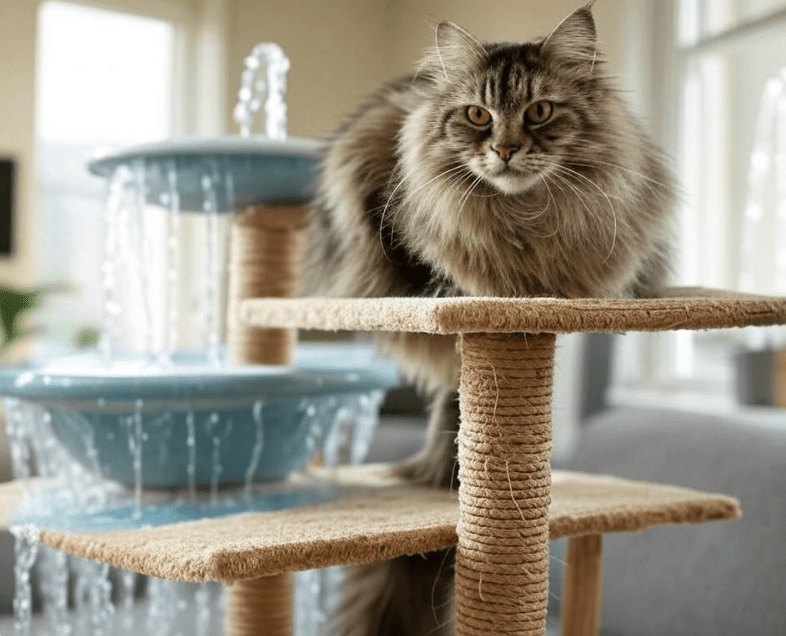
Double-Sided Tape: Apply sticky tape, like Sticky Paws, to furniture surfaces. Cats dislike the sticky texture and will avoid scratching treated areas.
Furniture Covers: Use slipcovers or throws to protect upholstery. Choose materials that are less appealing to scratch, like smooth microfiber.
Scent Deterrents: Spray furniture with cat-safe deterrents, such as citrus or lavender scents, which many cats find unpleasant.
Physical Barriers: Temporarily cover furniture with plastic sheets or aluminum foil to discourage scratching until your Maine Coon adopts the scratching post.
4. Trim Your Maine Coon’s Claws Regularly
Regular claw trimming reduces the damage caused by scratching and makes furniture less appealing as a scratching surface.
How to Trim: Use cat-specific nail clippers and trim only the sharp tips, avoiding the pink quick (the blood vessel inside the claw). Trim every 2–3 weeks.
Training Your Cat: Start trimming when your Maine Coon is relaxed, offering treats to create a positive association. If your cat resists, consult a vet or groomer.
Nail Caps: Soft nail caps, like Soft Claws, can be applied to your cat’s claws to prevent damage. These are temporary and need replacement every 4–6 weeks.
5. Enrich Your Maine Coon’s Environment
A stimulated Maine Coon is less likely to scratch furniture out of boredom or stress. Enrich their environment with:
Interactive Toys: Feather wands, laser pointers, and puzzle feeders engage your Maine Coon’s hunting instincts.
Climbing Structures: Cat trees or shelves allow Maine Coons to climb, perch, and explore, satisfying their need for vertical space.
Playtime: Dedicate 15–20 minutes daily to interactive play to burn off energy and strengthen your bond.
Window Perches: Provide access to windows for bird-watching, which keeps your cat mentally engaged.
6. Address Stress and Anxiety
If your Maine Coon’s scratching is stress-related, identify and mitigate the triggers:
Routine Changes: Maintain a consistent feeding, play, and litter box schedule to provide stability.
Multi-Cat Homes: Ensure each cat has their own resources (litter boxes, scratching posts, beds) to reduce competition.
Pheromone Diffusers: Products like Feliway mimic calming feline pheromones, reducing stress-related scratching.
Veterinary Consultation: If stress persists, consult your vet to rule out medical issues or discuss behavioral interventions.
7. Positive Reinforcement
Reward your Maine Coon for using scratching posts to reinforce the desired behavior.
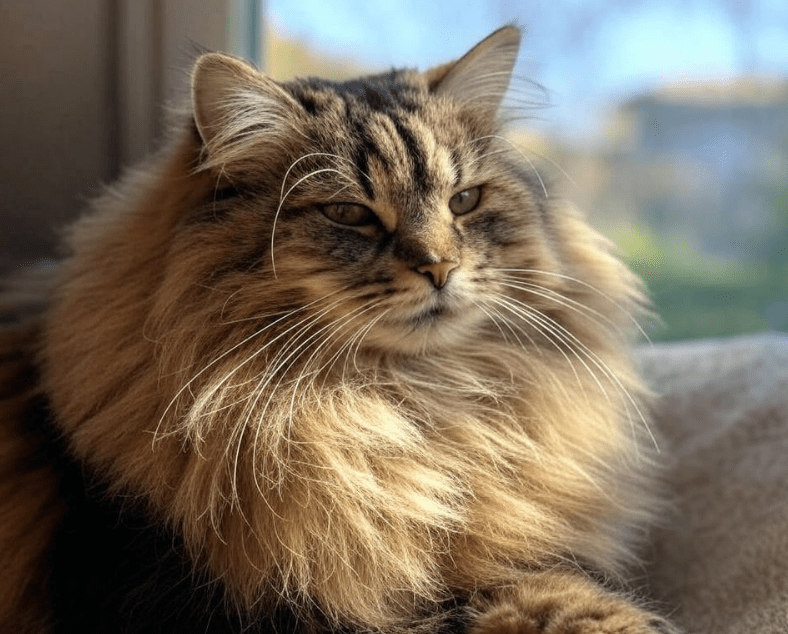
Treats and Praise: Offer treats, verbal praise, or petting when your cat uses the scratching post.
Catnip: Sprinkle catnip on scratching posts to attract your Maine Coon and make the experience enjoyable.
Avoid Punishment: Never yell or punish your cat for scratching furniture, as this can increase stress and worsen the behavior.
8. Consult a Professional
If scratching persists despite your efforts, seek help from a veterinarian or certified cat behaviorist. They can:
Rule Out Medical Issues: Pain, arthritis, or skin conditions can cause excessive scratching.
Behavioral Assessment: A behaviorist can identify underlying causes and create a tailored plan to address the issue.
Medication: In rare cases, anti-anxiety medication may be prescribed for severe stress-related scratching.
Special Considerations for Maine Coon Kittens
Maine Coon kittens are particularly prone to scratching as they explore their environment and develop their claws. Start training early to prevent furniture scratching:
Introduce Scratching Posts Early: Place kitten-sized scratching posts in their play area to establish good habits.
Supervised Play: Redirect scratching to appropriate surfaces during playtime, rewarding them for using posts.
Teething Phase: Kittens may scratch more during teething (3–6 months). Provide safe chew toys to soothe their gums.
Socialization: Expose your kitten to various textures and environments to reduce stress-related scratching as they grow.
Common Myths About Maine Coon Scratching
Misconceptions about scratching can lead to ineffective solutions. Let’s debunk some myths:
Myth: Declawing is a safe solution for scratching.
Fact: Declawing is a painful surgical procedure that can cause long-term physical and behavioral issues. It’s banned in many countries and not recommended.
Myth: All cats scratch the same way.
Fact: Maine Coons’ large size and strength make their scratching more destructive, requiring sturdier scratching posts.
Myth: Scratching is always destructive.
Fact: Scratching is a natural behavior that can be redirected to appropriate surfaces with training.
Conclusion
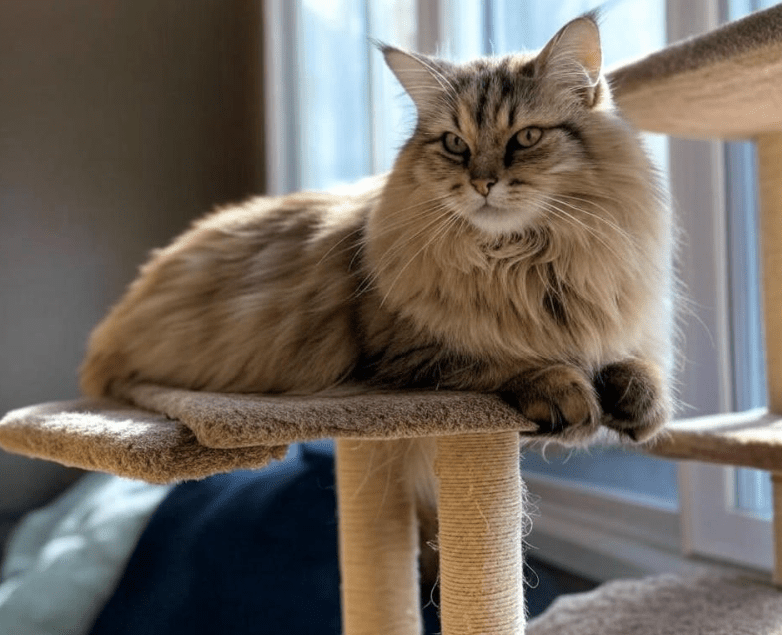
Maine Coon cats are magnificent companions, but their scratching can pose challenges for furniture-loving owners. By understanding why your Maine Coon scratches and implementing solutions like sturdy scratching posts, environmental enrichment, and positive reinforcement, you can protect your home while meeting your cat’s natural needs. With patience and consistency, you’ll create a scratching-friendly environment that keeps both you and your Maine Coon happy. Start today, and enjoy a harmonious home with your gentle giant!

